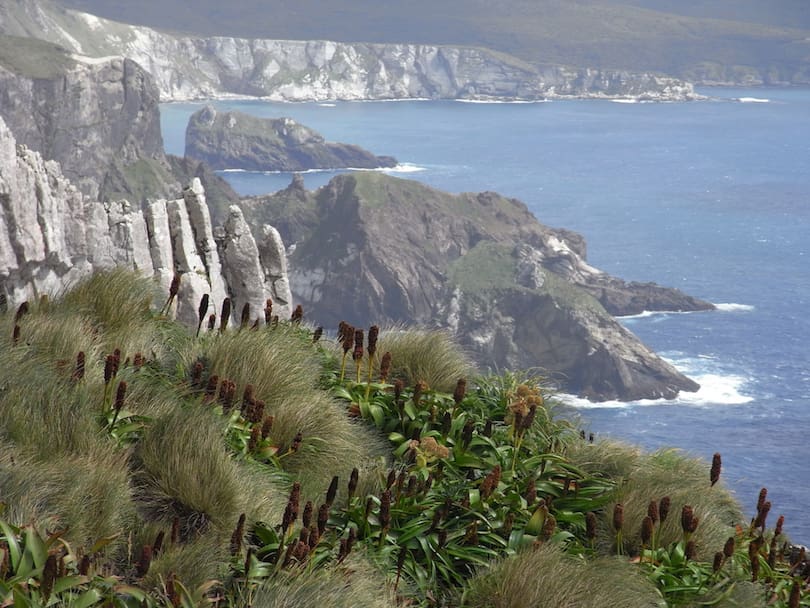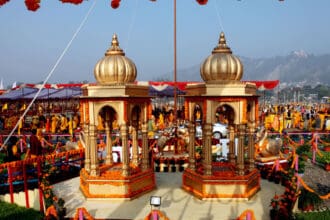Are you planning a trip to Ajmer and looking for the must-visit attractions? Located in the heart of Rajasthan, Ajmer is a city steeped in history, spirituality, and cultural heritage. From ancient forts to serene lakes, Ajmer offers a diverse range of experiences for travelers. In this article, we will explore the top seven places to visit in Ajmer, each offering a unique glimpse into the city’s rich past and vibrant present.
Ajmer: A Historical and Cultural Destination
Ajmer, nestled in the Aravalli Mountains, has been a center of historical and cultural significance for centuries. Its strategic location made it a coveted city, attracting rulers from different dynasties. Today, it stands as a testament to the blend of Hindu and Islamic architecture, creating a unique cultural fabric.
Rich history and cultural significance
Ajmer’s history dates back to the 7th century when it was founded by Raja Ajay Pal Chauhan. Over the years, it witnessed the reign of various dynasties, including the Chauhans, Mughals, and Rajputs. The city’s historical prominence is evident in its magnificent forts, palaces, and religious sites.
Dargah Sharif
No visit to Ajmer is complete without experiencing the tranquility and spiritual aura of Dargah Sharif. Located at the foot of the Taragarh Hill, Dargah Sharif is the tomb of the revered Sufi saint Khwaja Moinuddin Chishti. It attracts millions of devotees from different faiths, who seek solace and blessings at this sacred place.
History and importance of Dargah Sharif
The Dargah Sharif holds immense historical significance as it dates back to the 13th century. It is believed that Khwaja Moinuddin Chishti, also known as Garib Nawaz (Benefactor of the Poor), settled in Ajmer and devoted his life to serving humanity. The dargah is a symbol of communal harmony and has become a revered pilgrimage site for people of all religions.
The serene ambiance and Sufi music
As you enter the Dargah Sharif complex, you are enveloped by a sense of peace and spirituality. The rhythmic qawwalis (Sufi devotional songs) echo through the air, creating an enchanting ambiance. Visitors can sit in the courtyard, listen to the soul-stirring music, and soak in the spiritual atmosphere.
Spiritual experience for visitors
The Dargah Sharif offers a unique spiritual experience for visitors. They can offer prayers at the tomb, tie sacred threads (mannats) for their wishes, and seek the blessings of Khwaja Moinuddin Chishti. The Sufi saints’ teachings of love, peace, and unity resonate deeply with those who visit the dargah.
Ajmer Jain Temple
Ajmer Jain Temple, also known as Soniji Ki Nasiyan, is a significant religious site for the Jain community. This exquisite temple is dedicated to Lord Rishabhdev, the first Jain Tirthankara, and showcases the splendid Jain architecture.
The architectural marvel of Ajmer Jain Temple
The Ajmer Jain Temple is renowned for its intricate architecture and mesmerizing interiors. The main chamber, Swarna Nagari (City of Gold), is a visual spectacle adorned with gold-plated wooden figurines and intricate mirror work. The temple’s stunning craftsmanship is a testament to the devotion and artistic brilliance of the Jain community.
Religious significance for Jains
Jains consider Ajmer Jain Temple as one of their holiest places. It serves as a center for religious ceremonies, cultural gatherings, and spiritual discourses. Devotees flock to this temple to seek blessings and find solace in the teachings of Lord Rishabhdev.
Intricate carvings and artwork
Every nook and corner of the Ajmer Jain Temple is adorned with elaborate carvings and artwork. The walls depict scenes from Jain mythology, showcasing the life and teachings of the Tirthankaras. The temple’s architecture and detailed artwork make it a photographer’s delight and a must-visit for art enthusiasts.
Ana Sagar Lake
Ana Sagar Lake, a man-made reservoir, is a picturesque retreat nestled amidst the Aravalli Mountains. Built by Anaji Chauhan, the grandfather of Prithviraj Chauhan, it is a serene spot where visitors can unwind and connect with nature.
A scenic retreat in Ajmer
Ana Sagar Lake’s serene ambiance and scenic beauty make it a popular spot for locals and tourists alike. The lake is surrounded by well-maintained gardens, pathways, and pavilions, providing a tranquil environment for relaxation and leisurely walks.
Boating and leisure activities
Visitors can indulge in boating on the calm waters of Ana Sagar Lake, enjoying the refreshing breeze and admiring the panoramic views. The lake also offers various recreational activities like horse riding and camel safaris, adding a touch of adventure to the experience.
Sunset views and photography opportunities
One of the highlights of visiting Ana Sagar Lake is witnessing the mesmerizing sunset views. As the sun dips below the horizon, the sky is painted with hues of orange and gold, casting a magical spell on the surroundings. Photographers can capture stunning shots of this natural spectacle.
Taragarh Fort
Perched on a hilltop, Taragarh Fort stands as a magnificent testament to Ajmer’s historical grandeur. Also known as the Star Fort, it offers breathtaking panoramic views of the city and the surrounding Aravalli Mountains.
Exploring the ancient Taragarh Fort
A visit to Taragarh Fort takes you on a journey through the annals of Ajmer’s history. As you wander through the fort’s massive gateways and narrow passages, you can imagine the battles and royal events that once unfolded within its walls. The fort’s architectural marvels and ancient relics provide insights into the city’s glorious past.
Breathtaking panoramic views of Ajmer
From the vantage points of Taragarh Fort, you can witness panoramic views of Ajmer’s landscape. The sprawling cityscape, Ana Sagar Lake, and the surrounding hills create a breathtaking backdrop. It’s a photographer’s paradise, offering ample opportunities to capture the beauty of Ajmer from different angles.
Historical significance and architectural features
Taragarh Fort holds immense historical significance and was a strategic stronghold during various periods. Its sturdy bastions, imposing walls, and intricately designed gateways are reminiscent of the Rajput architectural style. Exploring the fort allows you to delve into Ajmer’s past and appreciate its architectural heritage.
Nasiyan Jain Temple
Another architectural gem in Ajmer is the Nasiyan Jain Temple, also known as the Red Temple. This Digambar Jain Temple is renowned for its stunning architecture and elaborate wooden carvings.
Digambar Jain Temple known for its stunning architecture
Nasiyan Jain Temple is a marvel of architectural brilliance. The temple’s façade is adorned with intricate red sandstone carvings that depict various scenes from Jain mythology. Every inch of the temple is a testament to the craftsmanship and devotion of the artisans.
Intricate wooden carvings and gold-plated sculptures
Step inside the Nasiyan Jain Temple, and you’ll be mesmerized by its intricate wooden carvings and gold-plated sculptures. The delicate detailing and ornate craftsmanship of the interiors create an ethereal atmosphere. The temple’s sanctum showcases a magnificent gold-plated statue of Lord Mahavira, the 24th Jain Tirthankara.
Exhibits depicting the Jain philosophy
Nasiyan Jain Temple also houses a museum that displays exhibits portraying the fundamental principles of Jainism. The museum’s dioramas and sculptures depict the life and teachings of the Jain Tirthankaras. It offers visitors a deeper understanding of Jain philosophy and its relevance in today’s world.
Ajmer Museum
Ajmer Museum, located within the magnificent Akbari Fort, is a treasure trove of artifacts that showcase the city’s rich history. The museum offers a glimpse into Ajmer’s cultural heritage, encompassing a wide range of historical periods.
Showcasing the rich history of Ajmer
Ajmer Museum houses an extensive collection of artifacts, including sculptures, miniature paintings, arms and armor, and historical documents. Each exhibit sheds light on different eras, from the Mughal dynasty to the Rajput rulers. It provides a comprehensive overview of Ajmer’s historical and cultural evolution.
Artefacts and exhibits from various eras
Visitors to Ajmer Museum can marvel at the intricate craftsmanship of the miniature paintings, which depict scenes from Indian mythology and courtly life. The museum also displays ancient coins, royal garments, and weaponry, giving a glimpse into the opulence and grandeur of bygone eras.
Insights into the Mughal and Rajput heritage
Ajmer’s strategic location made it an important center for both the Mughal and Rajput dynasties. The museum’s exhibits showcase the artistic and architectural influences of these periods. Visitors can learn about the historical significance of Ajmer and its connections with the rulers who left their mark on the city.
Pushkar
While in Ajmer, a visit to the nearby town of Pushkar is highly recommended. Famous for its holy lake and vibrant cultural festivities, Pushkar offers a unique spiritual and cultural experience.
A visit to the holy town of Pushkar
Pushkar, located just a short distance from Ajmer, is one of the oldest towns in India. It is considered one of the five sacred pilgrimage sites for devout Hindus. The town’s rich cultural heritage and religious significance make it a must-visit destination for travelers.
Famous Brahma Temple and sacred Pushkar Lake
The Brahma Temple in Pushkar is the most prominent attraction, dedicated to Lord Brahma, the creator in Hindu mythology. Pilgrims from across the country visit the temple to seek blessings. Pushkar Lake, located in the heart of the town, is believed to be a sacred lake created by Lord Brahma. Taking a dip in the holy waters is considered purifying and spiritually uplifting.
Camel fair and cultural festivities
Pushkar is famous for its annual camel fair, a vibrant extravaganza that attracts visitors from around the world. The fair showcases Rajasthani traditions, folk performances, camel races, and colorful markets. It’s an opportunity to immerse yourself in the cultural tapestry of Rajasthan and witness the liveliness of Pushkar.
Conclusion
Ajmer, with its historical monuments, religious sites, and cultural heritage, offers a captivating journey through time. From the serene ambiance of Dargah Sharif to the architectural marvels of Ajmer Jain Temple and Nasiyan Jain Temple, each place exudes its unique charm. Exploring Taragarh Fort, Ana Sagar Lake, Ajmer Museum, and venturing to the holy town of Pushkar adds depth to the Ajmer experience. Whether you seek spirituality, history, or cultural richness, Ajmer has something to offer every traveler.
Frequently Asked Questions (FAQs)
- Q: How can I reach Ajmer?
- A: Ajmer is well-connected by road, rail, and air. The nearest airport is Jaipur International Airport, which is approximately 130 kilometers away. Regular train services and buses connect Ajmer to major cities in Rajasthan and other parts of India.
- Q: Can I visit Dargah Sharif if I’m not a Muslim?
- A: Yes, Dargah Sharif welcomes visitors from all religions. The serene ambiance and Sufi music create a spiritual atmosphere that transcends religious boundaries.
- Q: Are there any accommodation options near Ajmer’s attractions?
- A: Yes, Ajmer offers a range of accommodation options to suit different budgets. There are hotels, guesthouses, and resorts located near popular attractions, ensuring convenient access to the city’s highlights.
- Q: Is photography allowed in the Ajmer Jain Temple?
- A: Photography is usually allowed in the Ajmer Jain Temple, but it’s recommended to check with the temple authorities for any specific guidelines or restrictions.
- Q: When is the best time to visit Ajmer?
- A: The best time to visit Ajmer is during the winter months, from October to March, when the weather is pleasant and ideal for sightseeing. Summers in Ajmer can be hot, so it’s advisable to avoid visiting during peak summer months.







